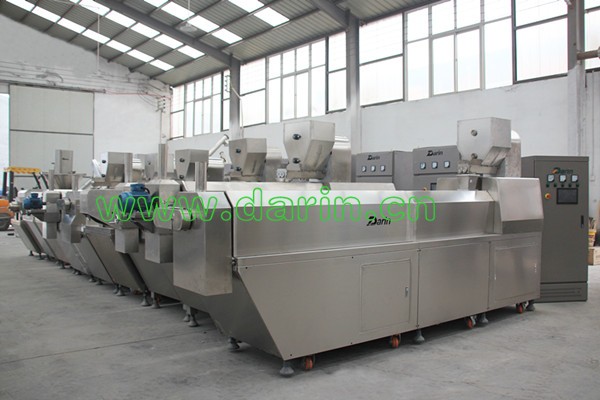According to Taiwan's statistics from the Taiwan Automobile Association, it is estimated that the export value of Taiwan's auto components will exceed 100 billion yuan (NT) for the first time last year, with an annual growth rate of more than 20%. The major automotive component manufacturers on the island are all optimistic about this year's economic climate. To meet this unstoppable growth trend, various manufacturers are adopting a grand strategy of “establishing foothold in Taiwan, competing for the mainland, and distributing the worldâ€. This year will be A full year of momentum.
According to the Taiwan Business Times, Wu Junyi, chairman of Taiwan’s Taiyi Group, pointed out that the mainland automobile market has grown from almost 3 million vehicles in the previous year to 4 million last year. 10 million vehicles will soon be seen. As a result, the Taiyi Fuzhou Plant completed the third plant expansion in the fourth quarter of last year, and its production capacity increased to 180,000 vehicle fleets. This will be the fourth or fourth quarter of this year. Plant expansion, production capacity will be promoted to 240,000 lights.
Wu Yongmao, president of Taiwan’s Dongyang Group, has long been optimistic about the unlimited business opportunities on the mainland. It was the first large-scale automobile components industry in the island to be placed on the mainland; Wu Yongmao said that the company plans to expand the existing 9 to 12 positions in the next two years. At present, Fuzhou, Chongqing, Nanjing and other auto bumper production plants are planning to increase their production capacity, while the Changchun Fuao Dongyang Plant will soon be completed and put into production. The other joint venture at Hafei Group Harbin Hafei Dongyang Plant is expected to operate in the first quarter of this year.
Automotive molds and sheet metal giants - Taiwan's Rayleigh Co., Ltd., in response to the mainland's alliance partner Hainan FAW to build a motor city, demand for surge in capacity demand, in addition to the existing Hainan Island plant, has participated in Hainan FAW plant expansion plan, the first phase of the project It is scheduled to be completed in the first quarter of this year.
In addition to the completion of the third phase of the Changzhou Damao Auto Lamp Factory, the largest vehicle lamp manufacturing plant in Taiwan, the Harbin Haxing Lights Factory was completed and put into operation in the second quarter of last year. It was jointly established with Changchun FAW Group at the end of last year. The FAW Sihuan Weixi Xizhan Lamp Factory is expected to start construction in March and April of this year. It will be completed in October and put into operation in November. Currently, it is still developing the development strategy in the southwest, north and south of China, and is expected to become the largest car in the mainland in 2007. Light supply system.
Brief Introduction
Food Extrusion is a form of extrusion used in food processing. It is a process by which a set of mixed ingredients are forced through an opening in a perforated plate or die with a design specific to the food, and is then cut to a specified size by blades. The machine which forces the mix through the die is an extruder, and the mix is known as the extrudate. The extruder consists of a large, rotating screw tightly fitting within a stationary barrel, at the end of which is the die.
Extrusion enables mass production of food via a continuous, efficient system that ensures uniformity of the final product. Food products manufactured using extrusion usually have a high starch content. These include some pasta, breads (croutons, bread sticks, and flat breads), many breakfast cereals and ready-to-eat snacks, confectionery, pre-made cookie dough, some baby foods, full-fat soy, textured vegetable protein, some beverages, and dry and semi-moist pet foods.
Process
In the extrusion process, raw materials are first ground to the correct particle size, usually the consistency of coarse flour. The dry mix is passed through a pre-conditioner, in which other ingredients are added depending on the target product; these may be liquid sugar, fats, dyes, meats or water. Steam is injected to start the cooking process, and the preconditioned mix (extrudate) is then passed through an extruder. The extruder consists of a large, rotating screw tightly fitting within a stationary barrel, at the end of which is the die. The extruder's rotating screw forces the extrudate toward the die, through which it then passes. The amount of time the extrudate is in the extruder is the residence time.
History
The first extruder was designed to manufacture sausages in the 1870s. Packaged dry pasta and breakfast cereals have been produced via extrusion since the 1930s, and the method was applied to pet food production in the 1950s. It has also been incorporated into kitchen appliances, such as meat grinders, herb grinders, coffee grinders, and some types of pasta makers. A similar functional process occurs when using pastry bags.
Effects
Extrusion enables mass production of food via a continuous, efficient system that ensures uniformity of the final product. This is achieved by controlling various aspects of the extrusion process. It has also enabled the production of new processed food products and "revolutionized many conventional snack manufacturing processes". The extrusion process results in "chemical reactions that occur within the extruder barrel and at the die.
Machine Photo:

Corn Flakes Extruding Line,Corn Flakes Production Line,Core Filled Food Extruder,Food Extruding Machine
Jinan Darin Machinery Co., Ltd. , https://www.globaldarin.com